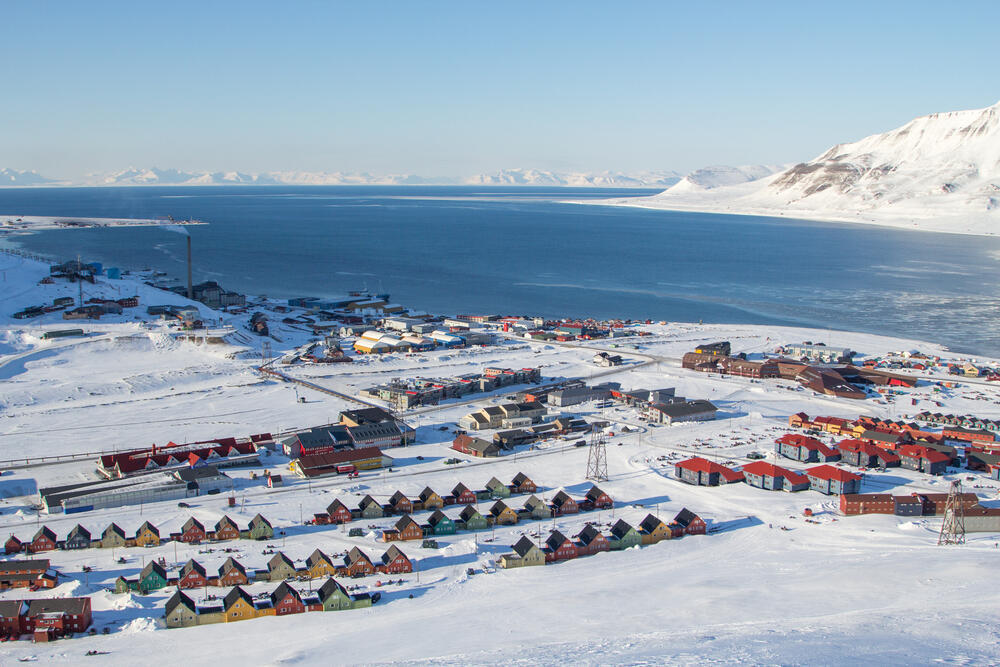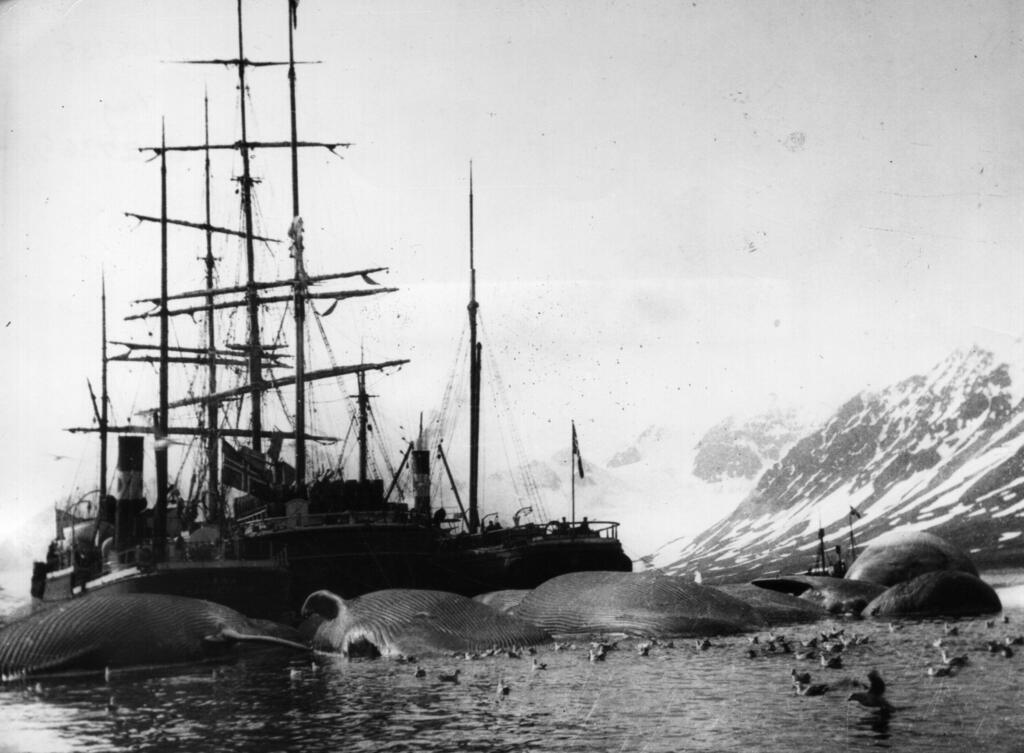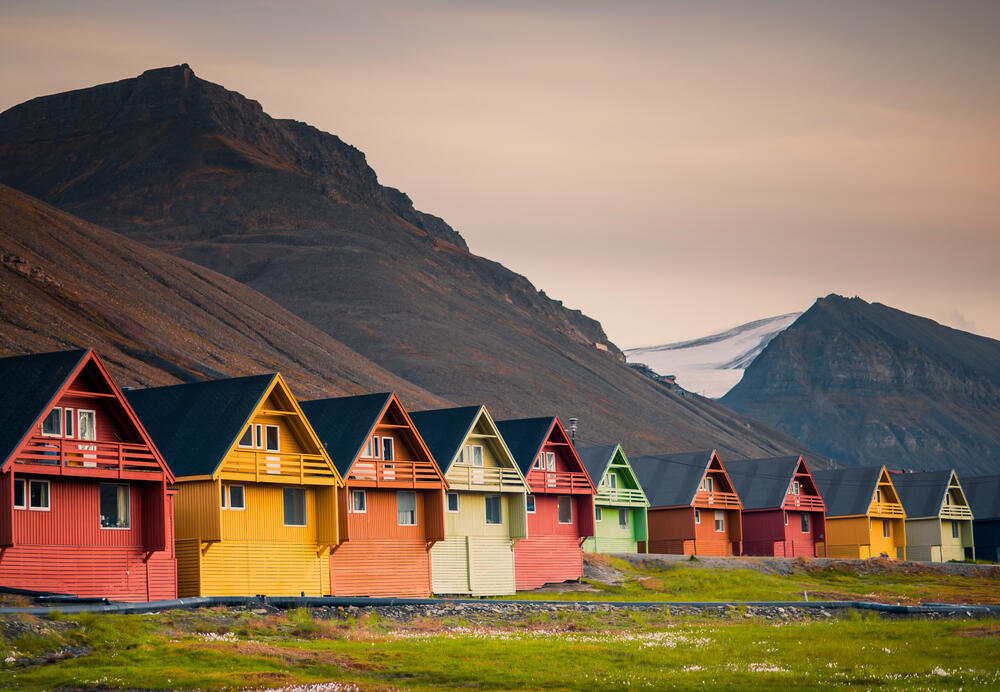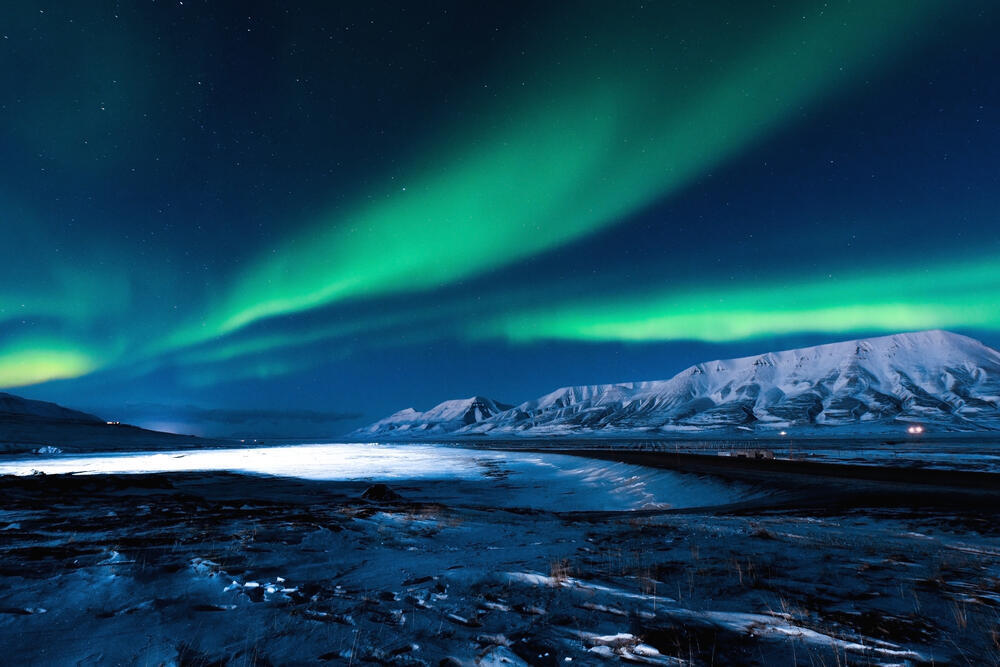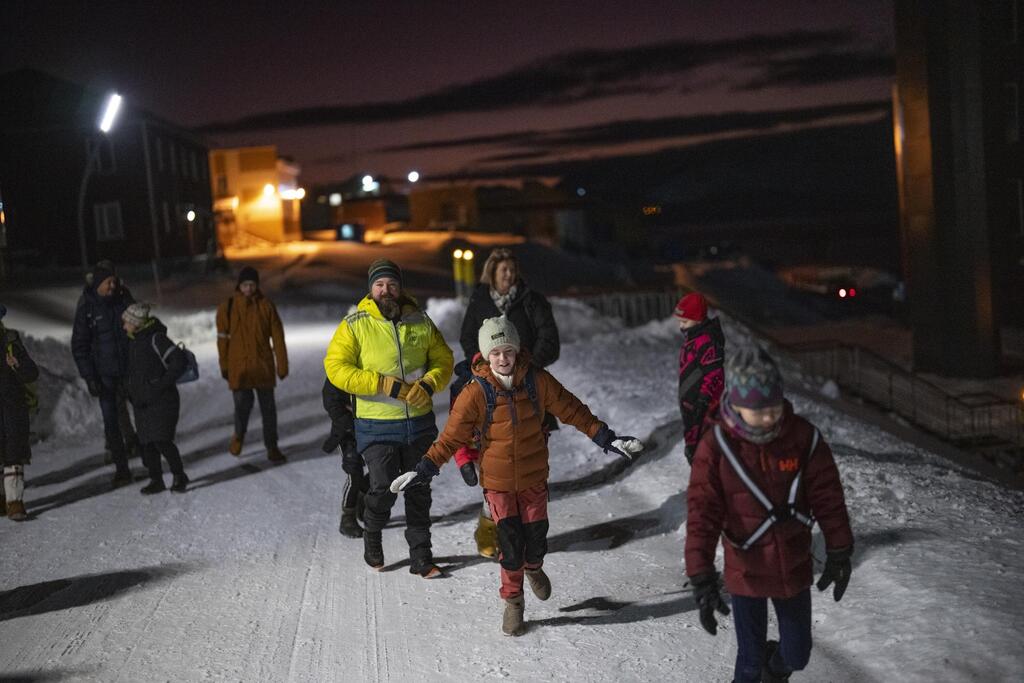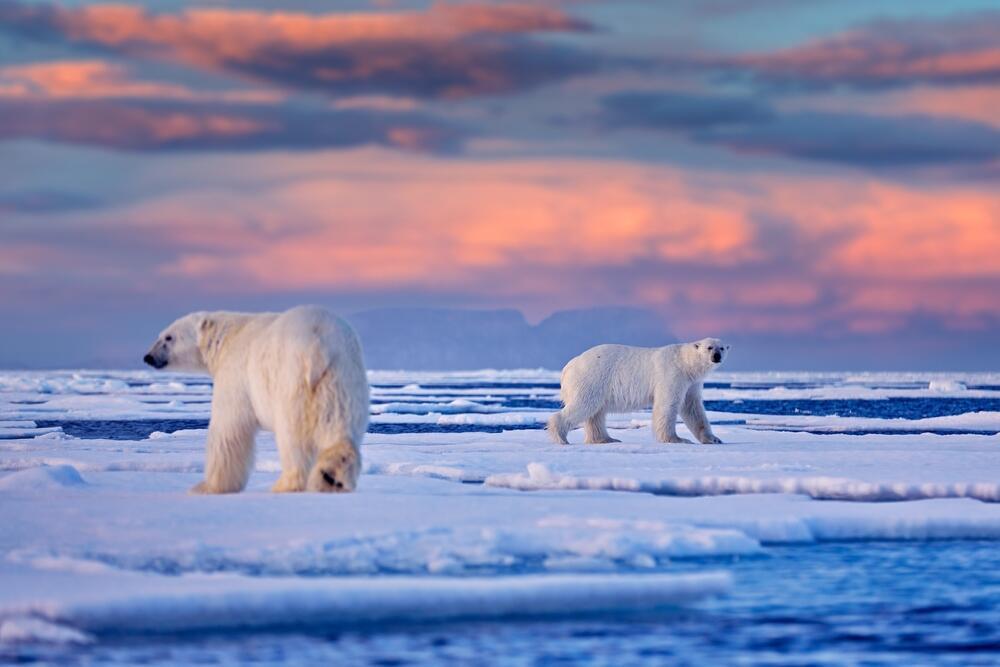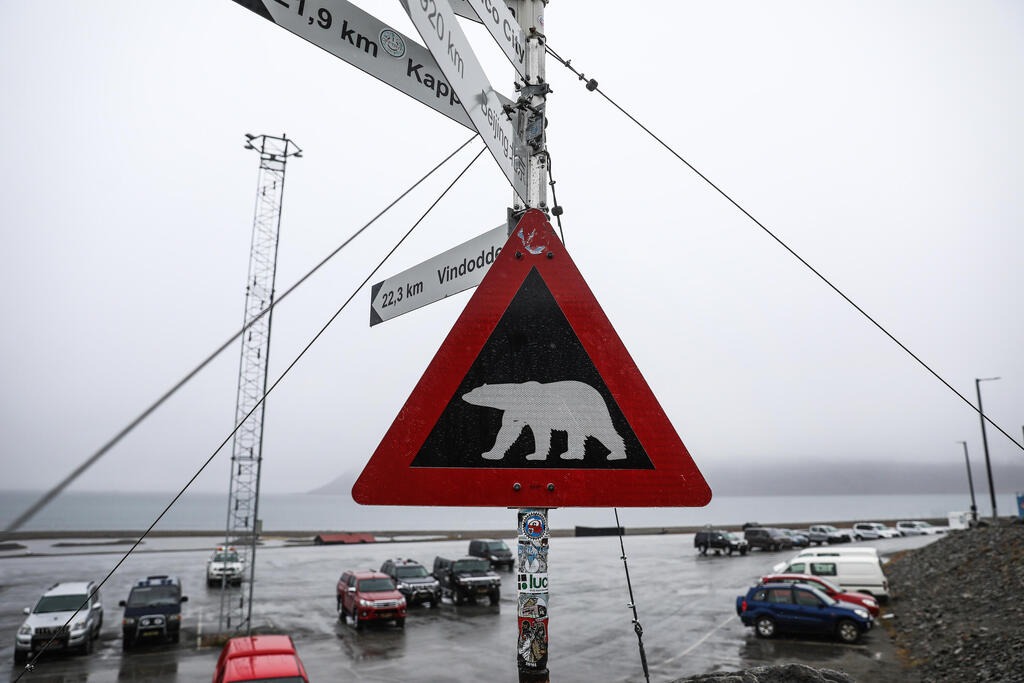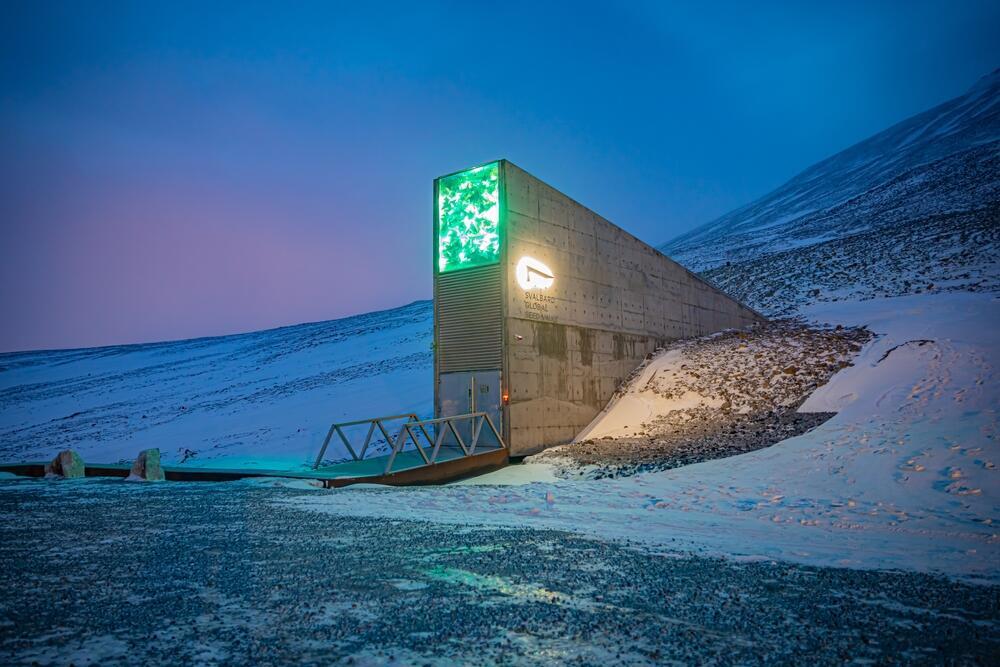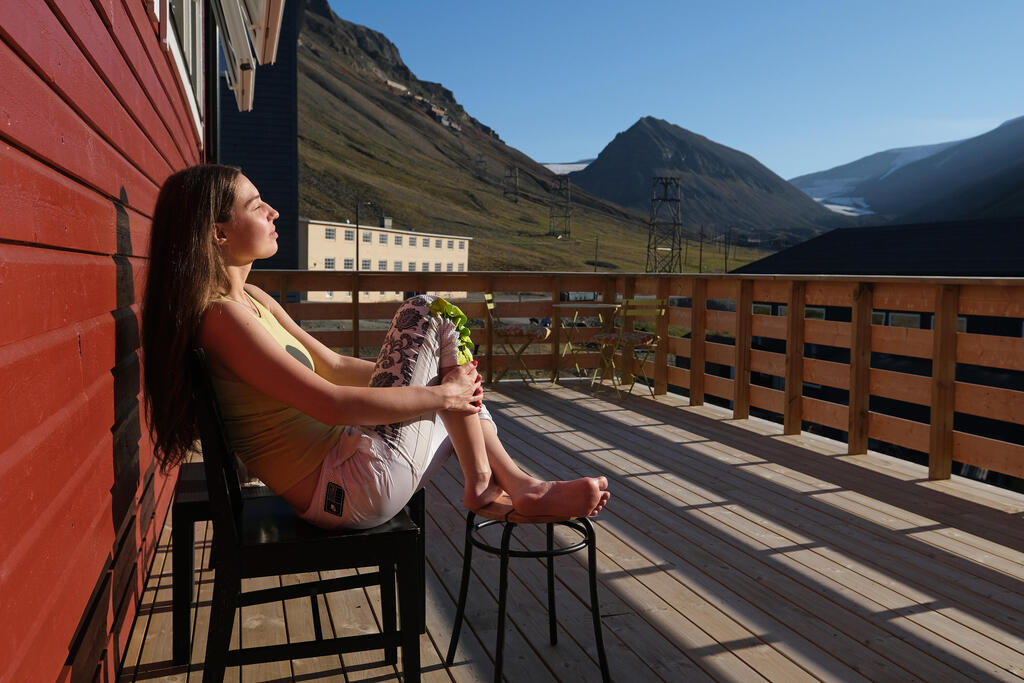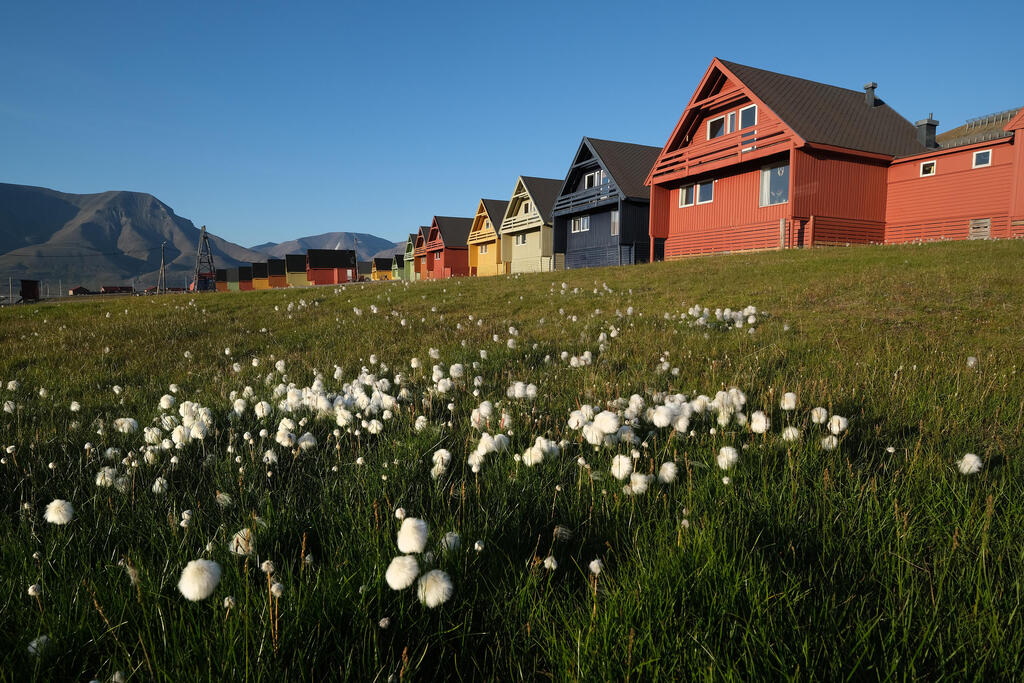Cecilia Blumdahl, a prominent Swedish blogger and TikTok sensation, adopts meticulous precautions when venturing outdoors with her dog.
More stories:
She dons an impressive ensemble of three insulating layers to withstand the chilling temperatures, adorns her head with a powerful flashlight to pierce through the perpetual darkness, and ensures her safety by carrying a rifle, prepared to confront any potential polar bear encounters.
Blumdahl is among the brave 2,500 inhabitants who call Svalbard home, a remote human settlement nestled halfway between Norway and the North Pole.
This extreme outpost exposes its residents to bone-chilling temperatures, hazardous polar bear encounters, and an enduring stretch of nearly three months of perpetual darkness. Similarly, they endure a similar duration where the sun never sets, navigating the unique challenges that come with living in this frigid, isolated region.
In addition to the formidable environmental challenges, living in Svalbard offers unique advantages. Residents are treated to breathtaking displays of the Aurora Borealis, awe-inspiring vistas of the Arctic landscape, and the luxury of lightning-fast internet connections.
Perhaps the most remarkable perk is the freedom from immigration constraints. Svalbard stands as the sole place on Earth where one can establish a fulfilling life without the need for citizenship, visas, or any form of authorization.
Even individuals solely holding Israeli citizenship can make Svalbard their new home as early as tomorrow, with the opportunity to reside there indefinitely. Fair warning, though. Your coat's ability to shield you from the cold better be out of this world.
How much for a watermelon?!
Svalbard, located in the North Ocean, is an archipelago comprising three prominent islands and numerous smaller ones. A significant portion, approximately 60%, of its surface is cloaked in sprawling glaciers. This remote expanse can be likened to an "Arctic desert," characterized by meager precipitation and dry, desert-like air.
Historians hold varying opinions regarding the precise moment humans first set foot upon this land. However, there is consensus that Dutch explorer Willem Barentsz holds the distinction of embarking on the first recorded expedition to the archipelago in 1596.
Barentsz's original objective was to chart a passage from Amsterdam to China, but as he ventured northward, he chanced upon an extraordinary, awe-inspiring, and breathtaking place that captured his imagination.
Throughout centuries, the archipelago and its encompassing waters played host to the merciless enterprise of whaling. It also held a unique place in the annals of history during World War II. Nazi Germany, recognizing its strategic significance, established a military meteorological station on the archipelago.
Due to its remote and secluded nature, the soldiers stationed in Svalbard became cut off from their mainland base, leading to a remarkable turn of events. It was not until September 1945, four months after Germany's collapse and the signing of the surrender agreement, that these isolated soldiers finally laid down their arms, making them the very last German troops to capitulate during the war.
Their protracted surrender was emblematic of the archipelago's distant and secluded character, leaving an indelible mark on its historical narrative.
The island underwent a momentous transformation, solidifying its exceptional standing that endures to this day, following the conclusion of the First World War. The victorious coalition of nations known as the "Consenting States" reached a consensus to bestow Norway with sovereignty over Svalbard. However, this transfer of authority came with a unique condition.
As stipulated in the "Svalbard Treaty," individuals from all nations that endorse the agreement would have the freedom to reside and engage in employment on the island without the need for additional permits. Interestingly, Israel did not affix its signature to this treaty, yet this omission bears no consequence.
Norway made the decision to extend the invitation to inhabitants of all countries, irrespective of their affiliation with the convention. Thus, Svalbard remains a place where the doors are open to individuals from across the globe, fostering a diverse and inclusive community.
A day in the life
The advent of the Svalbard Convention, a pivotal legal and economic framework governing the archipelago, yielded an immediate consequence: the flourishing coal mining industry. Recognizing the abundant coal deposits within Svalbard, numerous nations seized the opportunity and established mines on the islands.
Among the notable figures in the realm of coal mining in Svalbard was John Longyear, an enterprising businessman hailing from Michigan, whose name graces the largest human settlement in the archipelago, Longyearbyen. Interestingly, the customs and traditions of Svalbard include the practice of removing one's shoes upon entering homes—a remnant of the days when coal miners would return with soiled footwear after toiling for hours underground.
The policy of unrestricted immigration and the demand for labor in the coal industry attracted a substantial influx of foreign nationals to the archipelago, to the extent that there were more non-Norwegian residents in Svalbard than Norwegians in the past.
Presently, Norwegians constitute the majority population in Svalbard, yet sizable communities from Russia, Ukraine, and Poland also exist. While the population of Svalbard boasts diversity in terms of nationalities, it remains relatively homogeneous in other aspects.
It is rare to encounter elderly individuals or those with physical disabilities in Svalbard, as the environmental conditions pose significant challenges to their livelihood. However, the archipelago is home to a notable number of children, and there is a dedicated school catering to their educational needs.
As time passed, the coal mining industry in the archipelago experienced a decline, leading to significant transformations in the local landscape. The majority of the once-thriving large mines ceased operations, triggering a shift in the composition of the population.
In stark contrast to the past, when miners constituted the majority of Svalbard's residents, the present inhabitants are predominantly comprised of scientists, individuals employed in the tourism sector, and those seeking an alternative way of life—one that is brimming with adventure, isolation, and a stark departure from the familiar trappings of Western civilization.
Cecilia Blumdahl exemplifies such an individual. In 2015, she embarked on a journey to Svalbard alongside her then-partner, initially planning to reside there for a few months. Although the romantic relationship concluded, resulting in her ex-boyfriend's return to Sweden, Blumdahl found herself captivated by the enchanting allure of Svalbard and made the resolute decision to remain.
It was amid this extraordinary backdrop that she encountered her current partner, and together, they embarked on a unique path, acquiring an apartment devoid of running water. Presently, Blumdahl chronicles her life in this remarkable corner of the world, sharing her experiences with a staggering 2.6 million devoted followers.
"My daily existence is special and different," she expresses with fervor. "I am encircled by majestic mountains, awe-inspiring glaciers, the enigmatic presence of polar bears, and the mesmerizing dance of the Northern Lights. Each day unravels as an enthralling adventure."
Blumdahl's characterization of her life as "special and different" extends beyond her everyday experiences, as the leisure pursuits in Svalbard also embody extraordinary elements, featuring a unique custom known as "wine and knit."
This popular social gathering takes place once a week, where residents convene during the evening hours to engage in the art of knitting while indulging in fine wine. Additionally, the locals find solace and enjoyment in prolonged sessions at the sauna and jacuzzi, immersing themselves in the soothing warmth.
Another cherished pastime entails the exhilarating experience of riding a dog sled, allowing them to traverse the pristine Arctic landscape in a thrilling manner.
However, if you're under the mindset that Svalbard would be the ideal refuge from Tel Aviv's crippling cost of living, think again. Blumdahl sheds light on this aspect during one of her videos as she explores the expansive and aesthetically pleasing supermarket in Longyearbyen, unveiling the staggering prices attached to certain groceries.
Astonishingly, a solitary avocado commands a hefty price tag of nearly NIS 12, while cottage cheese comes close to NIS 13. And if one dares to indulge in the refreshing sweetness of a watermelon amid the frigid winter conditions, they must be prepared to part ways with a substantial sum of NIS 71.
Life in Svalbard presents not only the dreaded ordeal of supermarket checkouts but also numerous challenges related to mobility and the absence of daylight. The archipelago boasts a mere 43 kilometers of paved roads, and even the utilization of these roads is contingent upon unpredictable weather conditions.
The primary means of transportation in the region predominantly involve snowmobiles and boats. Furthermore, the prolonged period of darkness exacts a significant toll on the mental well-being of residents.
Even in Israel, individuals may attest to experiencing a certain despondency during the initial days of winter when the sun sets early. However, envisioning a life where the sun fails to rise at all casts a much deeper shadow over one's existence.
Every year on March 8, at precisely 11:15 in the morning, the residents of Svalbard come together to jubilantly commemorate the first day of daylight after enduring months of darkness. This momentous occasion unfolds as a week-long celebration filled with exuberant festivities.
The revelries entail indulging in Solboller, a delectable Norwegian pastry, and uniting in song, despite the inevitable hoarseness that accompanies the prolonged darkness.
Elizabeth Bourne, an American artist residing in Svalbard, shared her exhilarating experience with the "New York Times," recounting how the initial glimpse of daylight after an extended period of darkness evoked a childlike enthusiasm within her, prompting an exuberant scream of joy.
Life in Svalbard harbors another formidable threat in the form of polar bears - majestic creatures with a propensity for aggression. Current estimates suggest that approximately 3,000 polar bears inhabit Svalbard, outnumbering the human population.
As per local regulations, individuals venturing beyond the populated areas must carry a rifle as a precautionary measure against potential bear attacks. While the bears generally refrain from approaching human settlements, they may venture into residential spaces in search of sustenance if hunger strikes.
To safeguard against such encounters, the residents of Svalbard employ helicopters equipped with powerful searchlights that cast an intimidating red glow, deterring the predatory animals and providing a sense of defense.
Living? Yes. Dying? Think again
While Svalbard warmly embraces residents for an extended stay, its tolerance for certain aspects of the life cycle is considerably diminished. Although a hospital is present on the archipelago, it lacks a maternity ward, necessitating pregnant women to depart Svalbard during the advanced stages of pregnancy and give birth in mainland Norway.
Similarly, when it comes to the inevitable journey of death, Svalbard does not offer a final resting place. While a small cemetery exists, it has ceased accepting new burials since the 1950s due to concerns of disease transmission. Furry companions in the form of cats are also unwelcome in the archipelago, as local regulations prohibit their introduction to protect the avian inhabitants of the region.
Among the renowned landmarks of Svalbard, the World Seed Bank stands as a prominent symbol. Within its fortified walls, over 20 million seeds of various edible plant species lie in wait, preserved to safeguard humanity in the face of potential doomsday scenarios, such as devastating natural disasters.
Sadly, the harrowing reality of doomsday has already befallen Syria. The ravages of the long-standing civil war resulted in the demise of the seed bank previously operating in the country, compelling the unprecedented opening of the one in Svalbard.
Svalbard's significance extends far beyond its geographical proximity to the North Pole. Its strategic location and the provisions of the Svalbard Convention, which grant research rights to all nations, have transformed it into a global hub for scientific exploration.
Scientists from around the world flock to this remote archipelago, drawn by its unique research opportunities that shed light on both the broader Earth system and the enigmatic North Pole.
Recognizing the immense scientific potential, several countries, including Poland, China, and Russia, have established arctic research centers within Svalbard's borders. The European Space Center has also set up a satellite tracking station, enabling advanced space-related studies.
Furthermore, the University of Svalbard welcomes hundreds of aspiring students in biology, geology, and geophysics, who undertake immersive study programs in this remarkable environment.
To support the scientific community, Svalbard boasts state-of-the-art technological infrastructure. As early as 2003, the archipelago became one of the pioneers in underwater fiber optic connectivity, ensuring fast and reliable internet access.
It was among the first regions in the world to adopt 4G network connectivity, and since 2019, a cutting-edge 5G network has been operational, providing researchers and residents with seamless communication capabilities.
The focal point of intense study in Svalbard is undeniably the pressing issue of global warming. As the fastest-warming region on Earth, the North Pole is experiencing a staggering rate of temperature increase, with Svalbard at the forefront. The temperature surge in this remote archipelago is occurring at a staggering pace, seven times faster than the global average.
During the past summer, Svalbard witnessed a significant deviation from the norm, with an average temperature of 5.1 degrees Celsius, half a degree higher than typical for that time of year. The consequences of this rapid warming are evident in the shrinking ice areas caused by glacial melt.
On July 25, 2020, a record-breaking temperature of 21.7 degrees Celsius was recorded, marking the highest ever documented in Svalbard's history.
The effects of global warming are equally apparent in the altered dynamics of Svalbard's winters. In past decades, blizzards would commence as early as October and persist until March. However, this year, a notable shift occurred as snowfall only commenced in January.
Such transformations have far-reaching implications for all forms of life, from the iconic polar bears and other wildlife to the human inhabitants of the region.
The urgency surrounding the study of these processes is palpable, as scientists strive to comprehend and address the complex consequences of climate change unfolding in this fragile Arctic ecosystem.
While the residents of Svalbard may find temporary relief and delight in a few days of pleasantly warm sunshine, the significance of this phenomenon extends far beyond the archipelago. It serves as a stark and illuminating warning for the rest of the world.



